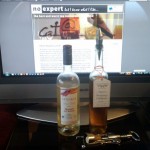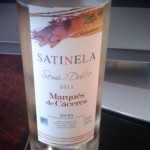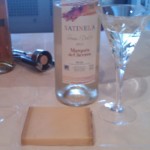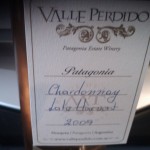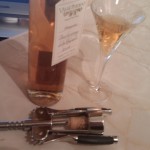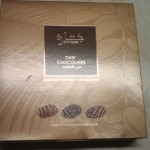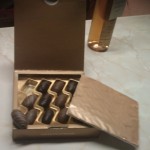Product Review for Fine Wines Direct UK
When it comes to Wine I know I am no expert, but I do know what I like, and over the years have been lucky enough to have endulged in quite a wide range of different dessert wines. I started off playing it safe with some basic Sauternes, moved on to Tokaji, found some bargain Coteaux du Layon wines, tried some great bottles of late harvest Riesling and Gewürztraminer, got blown away by PX, found a favorite in Eiswein, got hooked on Moscato d’Asti long before it got popular with the US Rapper fraternity and even had the chance to share a bottle of ridiculously expensive Chateau d’Yquem (arguably the most prestigious of all Dessert Wines). So when Fine Wines Direct UK said they would get someone who specialises in Dessert Wines to pick out a couple of bottles for us to review I was happy to oblige.
Fine Wines Direct UK supplied:-
A bottle of Santinela Semi-Dulce Marques de Caceres Rioja 2011 which is very new to the UK market and popular in Spain.
A bottle of Vale Perdido Late Harvest Chardonnay from Patagonia Estate Winery 2009 – this is exclusive to Fine Wines Direct
I had not tried either of these before.
The Marques de Caceres Rioja is a very light refreshing wine, with a pleasant fruity bouquet. To me it had a faint taste of peaches. It reminded me a little of Moscato d’Asti but without the fizz. This is an easy wine to drink on its own. I tried it with some rather fabulous baklava from Arabica Food and Spice which was a bit too overpowering to be a good match, but it did work surprising well with the Comté Cheese I recently purchased from Borough Cheese Company. This is the kind of wine you would have no problems drinking a lot of, especially on a nice summer evening. So can fully understand why it’s popular in Spain. It’s a fun wine with a low alcohol volume (12%) and a very practical one with a screw top cap which you might use if you don’t decide to drink it all at once.
The Vale Perdido Late Harvest Chardonnay is very different (I think it is a wine that you would more typically drink with food), it has a higher alcohol volume (15%) and is a lovely golden color. It’s almost sherry like, not overly sweet and has subtle hints of caramel (at least to my untrained palette), it worked really well as an accompaniment to both the rich nutty baklava and to the Jomara Date Chocolates my drinking companions brought back from Jordan. That is after I managed to open the bottle as it had one of these new synthetic wine corks that I hate (they may be safer but they can be a pain to open).
A bottle of good dessert wine is generally a lot more expensive than the equivalent volume of non dessert wine, which is why it makes a lot more sense to order online rather than pay the restaurant mark up. Having said that I still love to see a good dessert wine selection on a Wine List, generally because so few places give Dessert Wines the prominence they deserve, for example on one of my trips to Scotland, we had dinner at a modern rather flash venue that was perhaps trying a bit too hard to be cool. The Restaurant Manager served us and he was really enthusiastic about having put a Dessert Wine on the Wine list for the first time. We ordered it (off course), but didn’t have the heart to tell him that it was not a particularly good one. Regardless I applaud him for the effort, a lot of places sadly just do not take Dessert Wine seriously. We casually mentioned a few of the better Dessert Wines and hoped that he would take the hint, because if you are going to treat yourself to a dessert wine, you really want it to be a good one.
